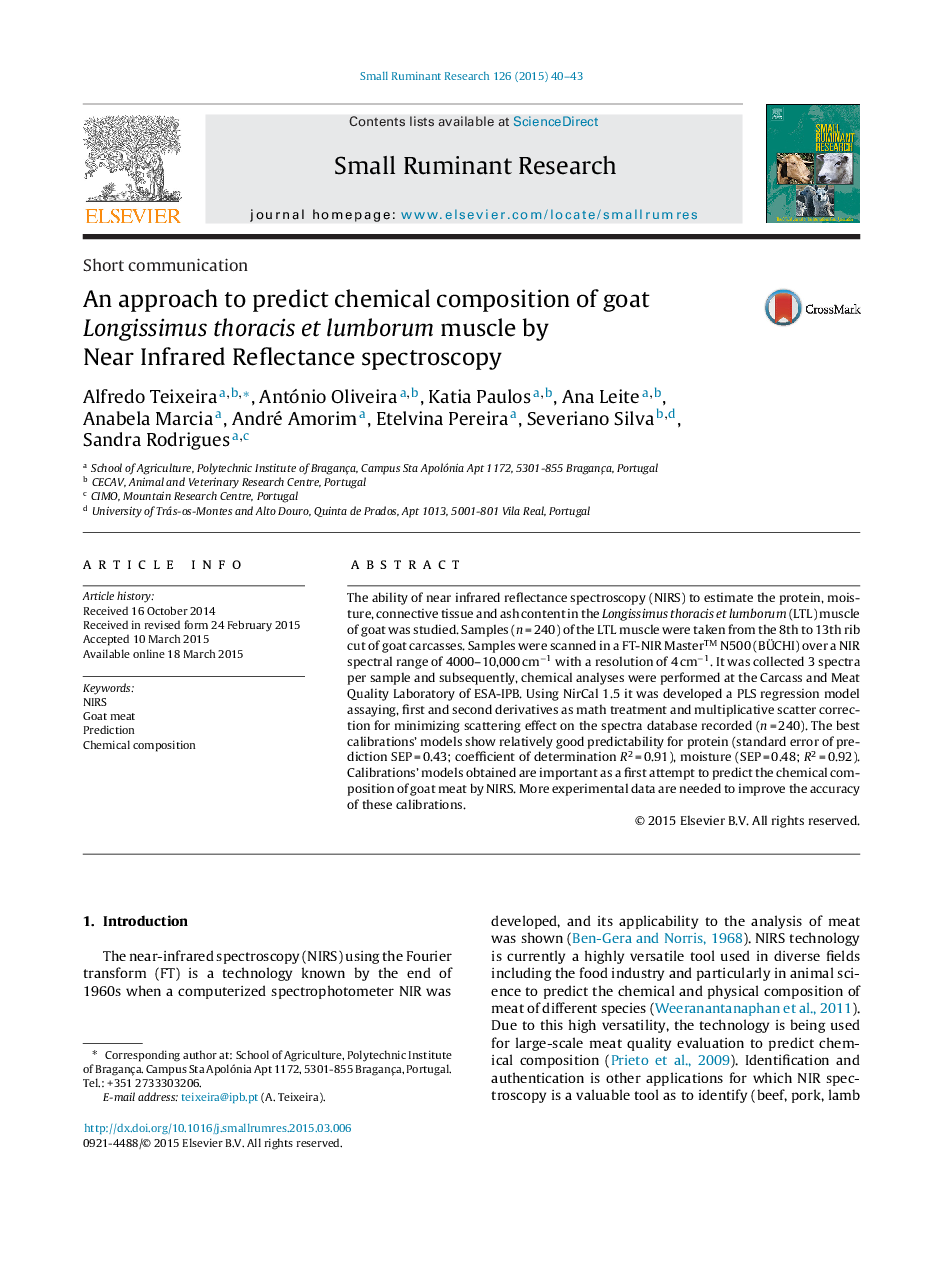| Article ID | Journal | Published Year | Pages | File Type |
|---|---|---|---|---|
| 2456994 | Small Ruminant Research | 2015 | 4 Pages |
•NIRS as a tool to assess rapidly the composition of goat fresh raw meat.•NIRS could improve the efficiency of processing of goat meat.•NIRS could help the selection of raw meat to reach the best quality processed products.
The ability of near infrared reflectance spectroscopy (NIRS) to estimate the protein, moisture, connective tissue and ash content in the Longissimus thoracis et lumborum (LTL) muscle of goat was studied. Samples (n = 240) of the LTL muscle were taken from the 8th to 13th rib cut of goat carcasses. Samples were scanned in a FT-NIR Master™ N500 (BÜCHI) over a NIR spectral range of 4000–10,000 cm−1 with a resolution of 4 cm−1. It was collected 3 spectra per sample and subsequently, chemical analyses were performed at the Carcass and Meat Quality Laboratory of ESA-IPB. Using NirCal 1.5 it was developed a PLS regression model assaying, first and second derivatives as math treatment and multiplicative scatter correction for minimizing scattering effect on the spectra database recorded (n = 240). The best calibrations’ models show relatively good predictability for protein (standard error of prediction SEP = 0.43; coefficient of determination R2 = 0.91), moisture (SEP = 0.48; R2 = 0.92). Calibrations’ models obtained are important as a first attempt to predict the chemical composition of goat meat by NIRS. More experimental data are needed to improve the accuracy of these calibrations.
